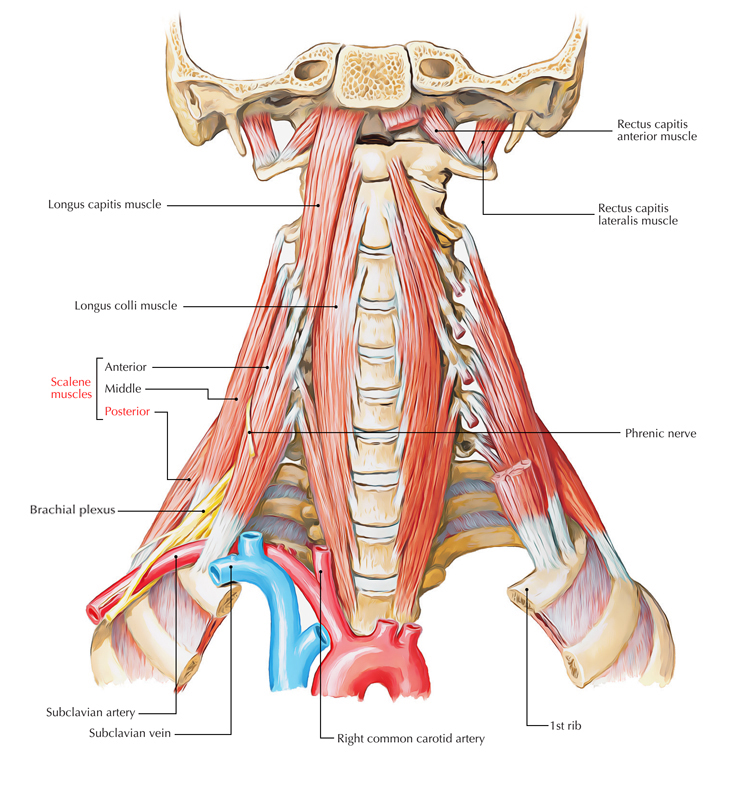Posterior scalene muscle a.k.a. Scalenus posterior is a muscle of scalene muscle group and is the smallest among them and is the deepest situated one also.

Posterior Scalene Muscle
Origin
It originates via posterior tubercles of the transverse processes of vertebrae C4, C5, and C6.
Insertion
It inserts at the outer side of second rib, at the back of the tubercle for attachment of serratus anterior.
Nerve supply
Ventral rami of the lower three cervical (C6, C7, and C8) spinal nerves innervate the posterior scalene muscle.
Actions
- It turns the cervical vertebral column towards the same side, whenever the 2nd rib is stationary.
- Elevates 2nd
Clinical Significance
Scalene Syndrome
It includes complications that are created in the scalene triangle because of constriction of lower trunk of brachial plexus (C8 and T1) and subclavian artery:
- Lifting its base by the cervical rib.
- Due to spasm of scalene muscles.
Symptoms
- Stinging sensation and lack of sensation along the inner border of forearm and hand.
- Gradual paresis and intrinsic muscles of the hand start wasting.
- Due to constriction of subclavian artery, ischemic pain and deficiency of radial pulse.
x

 (53 votes, average: 4.89 out of 5)
(53 votes, average: 4.89 out of 5)